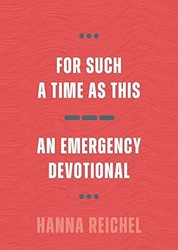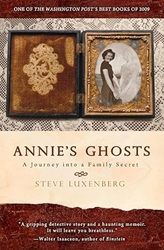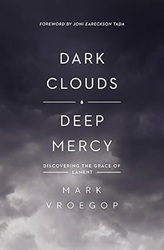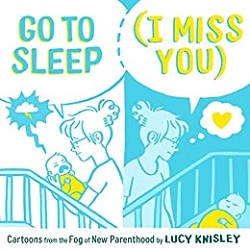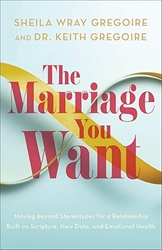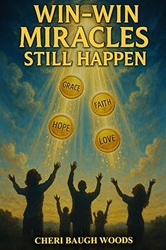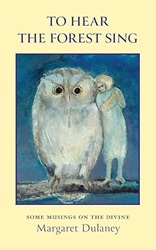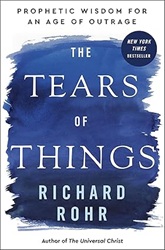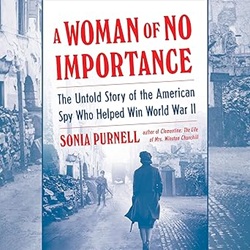Review of Hell Bent, by Brian Recker
How the Fear of Hell Holds Christians Back from a Spirituality of Love
by Brian Recker
Tarcher (Penguin Random House), 2025. 253 pages.
Review written November 1, 2025, from my own copy, purchased via Amazon.com
Starred Review
A great big thank you to my friend Nathan from church for bringing this book to my attention!
In the 1990s, despite all I’d been taught growing up, I let the writer George MacDonald persuade me that God will save everyone. That there is no such thing as everlasting conscious torment after death. Because a loving God would not do such an unjust thing. There may be judgment after death, but it will be restorative and will end when every tongue gladly confesses that Jesus Christ is Lord. (See David Bentley Hart’s translation of Philippians 2.)
Since then, I’ve read many, many more books about universalism and why this view is biblical – and even historical. I’ve got a whole webpage of reviews of those books.
But this new book by Brian Recker, although, yes, explaining why we can get the message of universalism from the Bible, also explains how belief in hell has infested the message of the church and damaged our witness. And he gives a beautiful vision of changing that.
He talks about the things I slowly discovered after I first started believing universalism. That it’s harder to dismiss your neighbor when you think he’s going to wind up in heaven with you some day. That it’s easier to listen to the opinions of others when you don’t think having exactly the right opinion saves you. But most of all, that it’s easier to love yourself and enjoy your own quirks without guilt when you don’t think God is keeping accounts, making sure that every small sin you commit is confessed so that it can be paid for with Jesus’ blood. For that matter, it’s easier to think of God as a loving Father if you don’t think someone has to die before God can forgive you.
Here’s how Brian Recker puts it in his Introduction:
In this book, I’ll explain why hell is not a biblical doctrine, but I want to go further than that. I want to trace how hell corrupts our spirituality to the very core. When I refer to the spirituality of hell, I mean more than just the belief that everyone who is not a born-again Christian will burn in hell. This is a toxic theology. But this toxic theology also creates a toxic spirituality – a misshapen way of relating to God, others, and yourself. The spirituality of hell is fear-based. It is motivated by avoiding punishment and rescuing other people from a punishing God. It results in guilt, shame, judgment, alienation, condemnation, othering, superiority, and paternalism – and it calls these things righteousness. If your spirituality is animated by hell, you may feel at your most holy right at the very moment you’re behaving at your most unloving. I have had countless conversations with people whose parents disowned them in the name of saving their eternal souls. These parents literally cast their children aside and called it love. Their love is twisted by hell – it is hell bent.
Brian covers the topic in three parts. Part One talks about “how hell corrupts Christian spirituality by disconnecting us from God, ourselves, and others.”
A punishing God can only be loved in the way a child can love an abusive parent. It is a love soaked through with fear. As feminist theorist bell hooks writes in her book All About Love, “There is nothing that creates more confusion about love in the minds and hearts of children than unkind and/or cruel punishment meted out by the grown-ups they have been taught they should love and respect. Such children learn early on to question the meaning of love, to yearn for love even as they doubt it exists.” If God is both love and a punisher, we learn to question the meaning of love. We may not realize it, but we can even begin to doubt that love exists. If God is punishing, then reality is fundamentally punishing, not loving.
On the positive side:
The gospel – the good news – is that you are already loved and accepted. That’s the message of grace at the heart of Christianity. You don’t have to do anything to be loved. Not anything at all. The work is always to receive it, to believe it. You don’t need to “be saved” to be loved. Salvation is just a way of describing the moment we come to know and believe that we are already loved, that we have always been loved. And our belovedness is not in spite of who we are but simply because we are worthy of love.
In Part Two, he talks about what the Bible actually says about heaven, hell, and universal reconciliation. This part covers in four chapters what other whole books talk about, but does a nice job. (If it’s not enough, check out my Exploring Universalism webpage for more!)
He talks about the words in the original languages written in the Bible – which did not mean eternal conscious torment. He talks about what drew me to universalism after reading George MacDonald – the many, many “all” verses of the New Testament. Jesus as the Savior of the world.
But this story of ultimate reconciliation is not just a stack of Bible verses. It is a key theme of the whole Bible, and it is essential to how we relate to God. We connect to God and love God because God first loves us. God is not a punisher; God is a healer. We fail, but God’s steadfast love “endures forever” – Psalm 136 repeats this truth twenty-six times! The redundant message doesn’t make for the most subtle poetry, but some truths need to be drilled into thick skulls. Despite the way that Christian history shows how we are experts at missing the point, those who know God best have always known that at the very heart of God is unfailing love.
And we can see it all in Jesus.
The Father does not judge but entrusts judgment to Jesus. And Jesus does not judge like we judge. We’re the ones who punish. We judge by human standards of retribution. Only in the last few decades have people begun to formally study how restorative justice methods compare to those of retributive justice, and the data from these experiments in our penal systems confirm what Jesus has said all along: Retribution doesn’t work. Retributive justice is no justice at all. It is revenge.
Part Three is about “A Spirituality of Love.” He starts with questions:
What’s the point of Jesus if there’s no hell? Why did Jesus die if not to save us from hell? What does it even mean to be saved? And how should Christians think about other religions if there is no hell?
And in exploring those questions, he gives us a vision of a loving, joyful spirituality without the taint of hell.
So yes, this is a book about hell, but it’s not just about hell. In fact, it is about the beautiful possibilities that can still exist for us within Christian spirituality. I believe Christian spirituality can reflect the very love that Jesus showed – a love that connects us to the best parts of ourselves. A love that can save the world.
I was left inspired by this book. I want to reread it, but will probably wait until I have transcribed the many quotes I marked onto my Sonderquotes blog. There is a study guide on Brian Recker’s website, and I do think it would make for wonderful small group discussion.
Now is a time for excitement. Without the shroud of punishment, we are invited to explore the beautiful world that opens up before us. You are not bound to your past. Your spirituality does not have to conform to the patterns you were raised with. You are able to listen to your wild, wise heart. You are able to hear the voice of God. God is not disappointed in you and is not going to punish you for straying outside of the lines. You are invited to follow the Spirit with courage, curiosity, and compassion into a love without fear.
May it be so.
Find this review on Sonderbooks at: www.sonderbooks.com/Nonfiction/hell_bent.html
Disclosure: I am an Amazon Affiliate, and will earn a small percentage if you order a book on Amazon after clicking through from my site.
Disclaimer: I am a professional librarian, but the views expressed are solely my own, and in no way represent the official views of my employer or of any committee or group of which I am part.
Subscribe for more reviews and talk about books.
Join the conversation: What did you think of this book?

